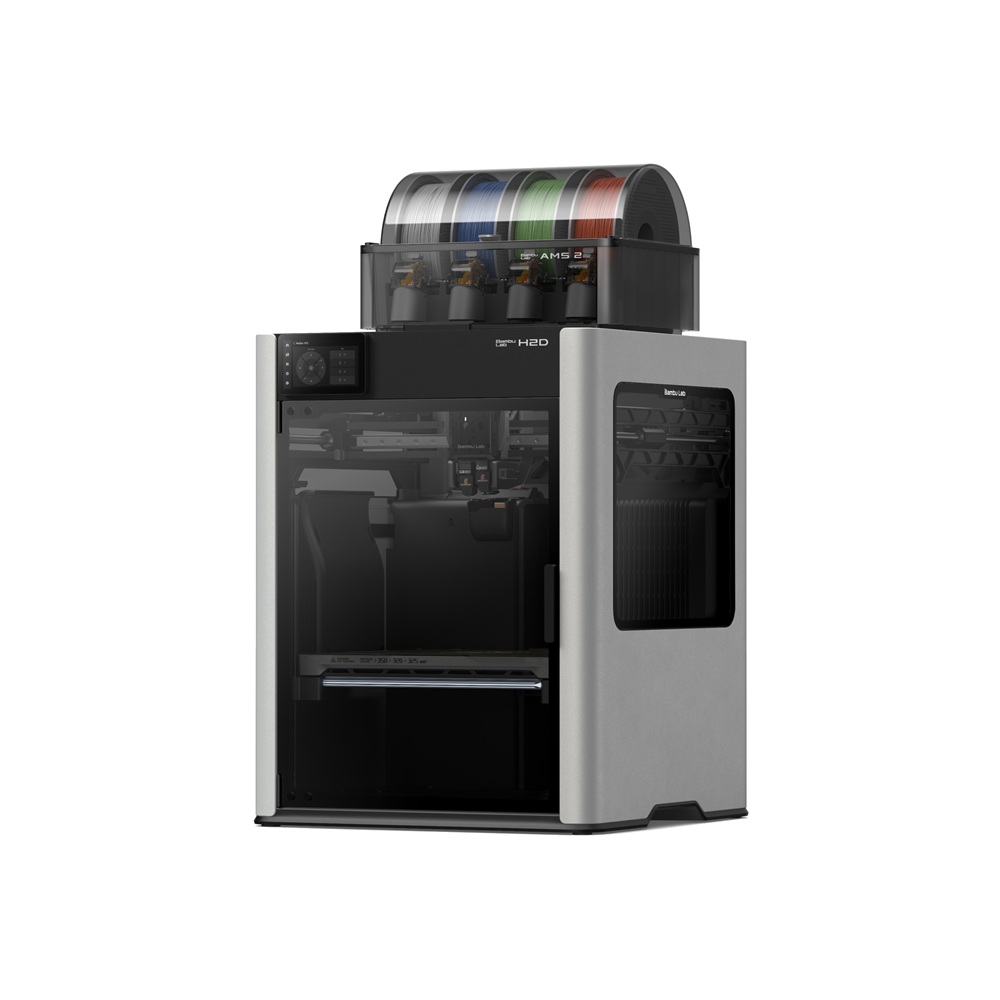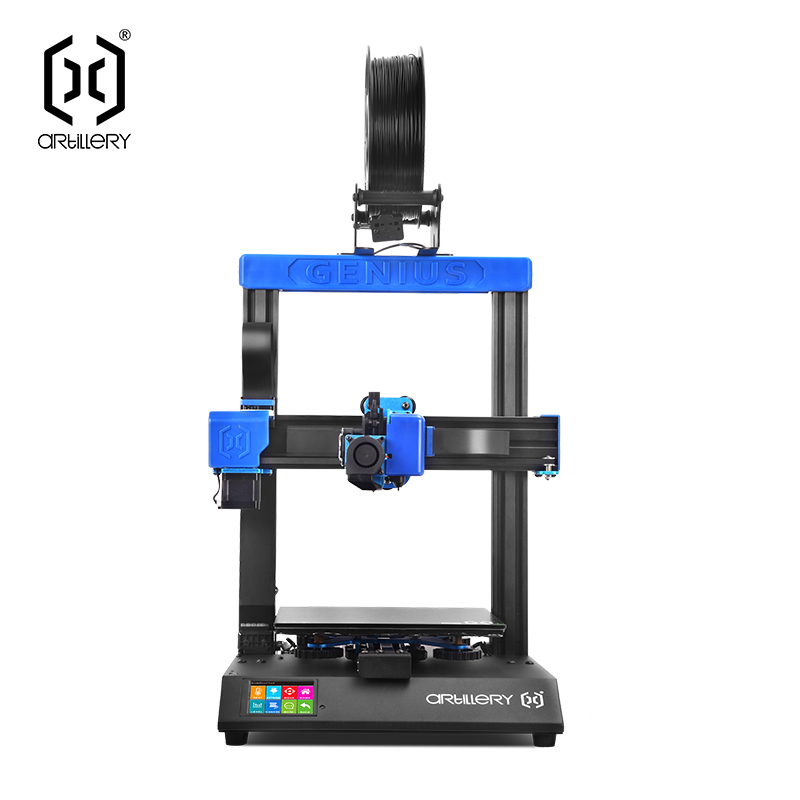Compare H2D vs Genius Pro
Comparison between the best 3D printers
Choose the best 3D printer at the best price. The cheapest 3D printers are here.
Buy a 3D printer here with 3D Fila.
 |
 |
|
| Model | H2D |
Genius Pro[BUY Genius Pro] |
| Printing Material | Filament | Filament |
| Buy Filament for Bambu Lab H2D | Buy Filament forArtillery Genius Pro | |
| Estimated price | $1899,00 | $309,00 |
| Manufacturer | Bambu Lab | Artillery |
| Release Year | 2025 | 2022 |
| Print Volume [mm] | 350x320x325 | 220x220x250 |
| Printer Size [mm] | 492x514x626 | 430x390x590 |
| Weight [kg] | 42,3 | 9,6 |
| Power Loss Recovery | YES | YES |
| Enclosed printer | YES | NO |
| Bed Leveling | Automatic | Automatic |
| Filament End Sensor | YES | YES |
| Bed type | Heated | Heated |
| Power supply system | Direct Drive | Direct Drive |
| Standard nozzle | 0,4 | 0,4 |
| Maximum Nozzle Temperature [°C] | 350 | 240 |
| Maximum Bed Temperature [°C] | 120 | 120 |
| Maximum printing speed [mm/s] | 600 | 150 |
| Filament holder | YES | YES |
| Camera for supervision | YES | YES |
| Recommended filaments | PLA, PETG, ABS, ASA, TPU, PVA, Nylon (PA) | PLA, PETG, Tritan, Flex, ABS |
| Recommended slicers | Bambu Studio | Cura, Simplify, Slic3r, IdeaMaker |
| Maximum Resolution [mm] | 0,01 | 0,1 |
| Processor | Ruby 32bit | |
| Display | Touchscreen 5'' | Touchscreen TFT 3,5'' |
| Power Supply | ||
| Connectivity | Wifi, Bambu bus, Cartão SD | SD / USB |
| Operating systems | Windows, Mac, Linux | Windows, Mac, Linux |
| Date of registration in the system | 2025-03-31 | 2022-11-07 |
| Release date | 2025 | 2022 |
| Extra features | Bambu Labs H2D combines high-speed 3D printing with a chamber heated up to 65 °C, dual extrusion with automatic nozzle switching, an AMS for filament drying and exchange, and AI sensors that detect failures. It offers optional laser and digital cutting capabilities, features intelligent calibration through computer vision, vibration control, enhanced fire safety, and real-time camera monitoring. | The Artillery Genius Pro is a standout 3D printer with a fast-heating AC tempered glass print bed and a sleek design with a black aluminum base and blue accents. It features a Titan-style direct extruder and a 32-bit Ruby mainboard. Despite its advanced feature set, it struggles to maintain print quality, requiring frequent adjustments and calibrations, and its glued glass bed makes cleaning and replacement difficult. |
| Support for multiple colors and materials (AMS and CFS) | YES | NO |
Notes * |
||
| Cost-benefit | 7 / 10 | 7 / 10 |
| Hardware | 8 / 10 | 2.8 / 10 |
| Tela | . | . |
| Print volume | 4 / 10 | 3 / 10 |
| Performance | 5 / 10 | 1 / 10 |
| [BUY Genius Pro] |
Conclusion |
| In comparing the Bambu Lab H2D and the Artillery Genius Pro, several key factors emerge that highlight the strengths and weaknesses of each printer. The H2D, with its significant print volume and superior speed, clearly caters to professional users or serious hobbyists who prioritize large and rapid projects. Its advanced features, such as dual extrusion capability, AI sensors for failure detection, and the ability to handle a wider variety of materials, set it apart as a technologically robust choice. Additionally, the H2D's enclosed design contributes to enhanced print consistency and safety, making it suitable for a broader range of applications. On the other hand, the Artillery Genius Pro, despite being considerably more affordable, shows limitations in print volume and quality maintenance. While it does feature a direct drive system and a fast-heating glass bed, the Genius Pro may require more frequent adjustments and calibrations, which could be frustrating for users seeking a hassle-free experience. Its lack of an enclosed build also impacts its ability to handle various materials effectively under diverse conditions. Ultimately, the choice between these two printers hinges on budget and intended use. The H2D, while priced higher, offers superior performance and features ideal for demanding printing tasks, making it a sound investment for dedicated users. Conversely, the Genius Pro presents a more accessible entry point for beginners or those with less intensive printing needs, albeit with certain trade-offs in print quality and versatility. Therefore, potential buyers should carefully consider their specific requirements and aspirations in the realm of 3D printing before making a decision. |

